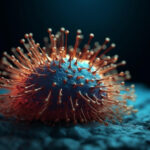Introduction
Niemann-Pick Disease Type C (NPC) is a rare genetic disorder that causes severe neurological and systemic impairments due to the accumulation of lipids in the body’s organs, particularly the brain, liver, and spleen. Currently, there is no cure for NPC, but advancements in research and drug development are offering new hope for better treatments. This article explores the emerging therapies and the ongoing progress in the Niemann-Pick Disease Type C treatment landscape.
Current Landscape: ZAVESCA (Miglustat)
One of the few therapies available for Niemann-Pick Disease Type C is ZAVESCA (miglustat), an oral drug that works by inhibiting the production of glycosphingolipids. These lipids accumulate in cells and organs, leading to the progression of NPC. ZAVESCA has been shown to slow disease progression in some patients, especially in early stages, but it is not a cure. It remains a key treatment option for NPC, particularly for managing the disease’s systemic effects. However, the limitations of ZAVESCA highlight the need for further advancements in NPC treatment.
Emerging Therapies for Niemann-Pick Disease Type C
1. Cyclodextrin-Based Therapies
Cyclodextrin-based therapies, particularly VTS-270, are one of the most promising emerging treatments for NPC. Cyclodextrin has been shown to effectively reduce cholesterol accumulation in the brain, which is a key hallmark of NPC. Clinical trials of intravenous cyclodextrin have demonstrated its ability to improve neurological outcomes in patients. The therapy could potentially slow down the progression of neurological damage, offering new hope to patients suffering from NPC.
2. Gene Therapy
Another innovative approach being explored for NPC is gene therapy. Gene therapy aims to address the root cause of NPC by introducing a functional copy of the NPC1 gene, which is mutated in affected individuals. Restoring the function of this gene could enable cells to process cholesterol correctly and prevent the harmful lipid accumulation seen in NPC. Ongoing research in this area holds great promise for potentially providing a long-term solution to NPC, but further clinical trials are necessary to determine its safety and efficacy.
3. Enzyme Replacement Therapy (ERT)
Enzyme replacement therapy (ERT) is another potential treatment for NPC, focusing on providing the missing or defective enzymes responsible for lipid metabolism. By supplementing the enzyme that is lacking in NPC patients, ERT aims to reduce the buildup of toxic substances in cells and slow disease progression. Although this approach is still in the research phase, it could offer significant therapeutic benefits, especially for patients with early-stage NPC.
4. Small Molecule Inhibitors and Other Drug Approaches
There is also growing interest in developing small molecule inhibitors that can target specific pathways involved in lipid accumulation and neurodegeneration in NPC. These therapies aim to correct the metabolic dysfunction that leads to NPC, providing new treatment options for patients. Preclinical studies and early-phase clinical trials are exploring these potential therapies, with the hope of offering more effective and less invasive treatments for NPC.
The Niemann-Pick Disease Type C Treatment Market
The Niemann-Pick Disease Type C treatment market is experiencing growth as new therapies are developed and tested. While ZAVESCA (miglustat) remains a cornerstone of treatment, the market is expanding with the addition of novel therapies. As research progresses, the demand for effective treatments will increase, particularly for therapies that target the underlying genetic cause of the disease and offer more significant benefits for patients.
The market for NPC treatments is also expected to grow as regulatory approvals for new therapies such as cyclodextrin-based treatments and gene therapies move forward. With continued clinical advancements, the Niemann-Pick Disease Type C treatment market will evolve, offering patients a broader range of options to manage their condition more effectively.
Conclusion
While ZAVESCA (miglustat) has been a critical part of the treatment landscape for Niemann-Pick Disease Type C, the pipeline for Niemann-Pick Disease Type C therapies holds exciting potential. Emerging treatments such as cyclodextrin-based therapies, gene therapy, and enzyme replacement therapy could revolutionize the way NPC is managed, providing better outcomes and possibly even a cure. As the Niemann-Pick Disease Type C treatment market continues to expand, patients and healthcare providers can look forward to more effective therapies that target the root cause of the disease, improving the lives of those affected by this rare condition.
Latest Healthcare Market Research Reports:
Angiosarcoma Market | Maple Syrup Urine Disease Market | Muscle Atrophy/ Wasting Syndrome Market | Pancreatic Ductal Carcinoma Market | Renal Vasculitis Market | Sandhoff Disease Market | Spinal Cord Stimulators Market | Usher Syndrome Market | Von Willebrand Disease Market | Adult Spinal Deformity Market | Chemotherapy-induced Neutropenia Market | Cutaneous Lupus Market | Diverticulitis Market | Dysthymia/persistent Depressive Disorder Market | Endometrial Cancer Market | Essential Thrombocythemia Market | Hattr Market | Hematuria Market | Hepatitis A Market | Hypertrophic Scar Market | Ischemic Stroke Market | Jak Inhibitor Market | Mucopolysaccharidosis I Market

